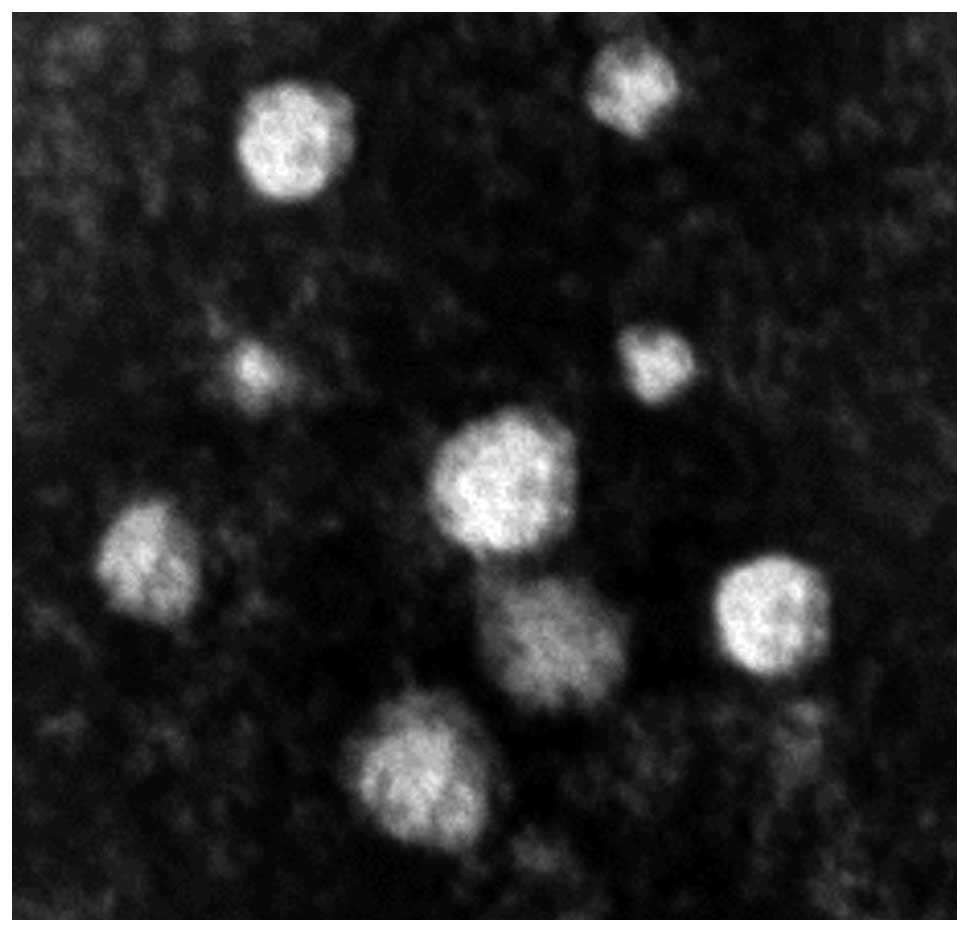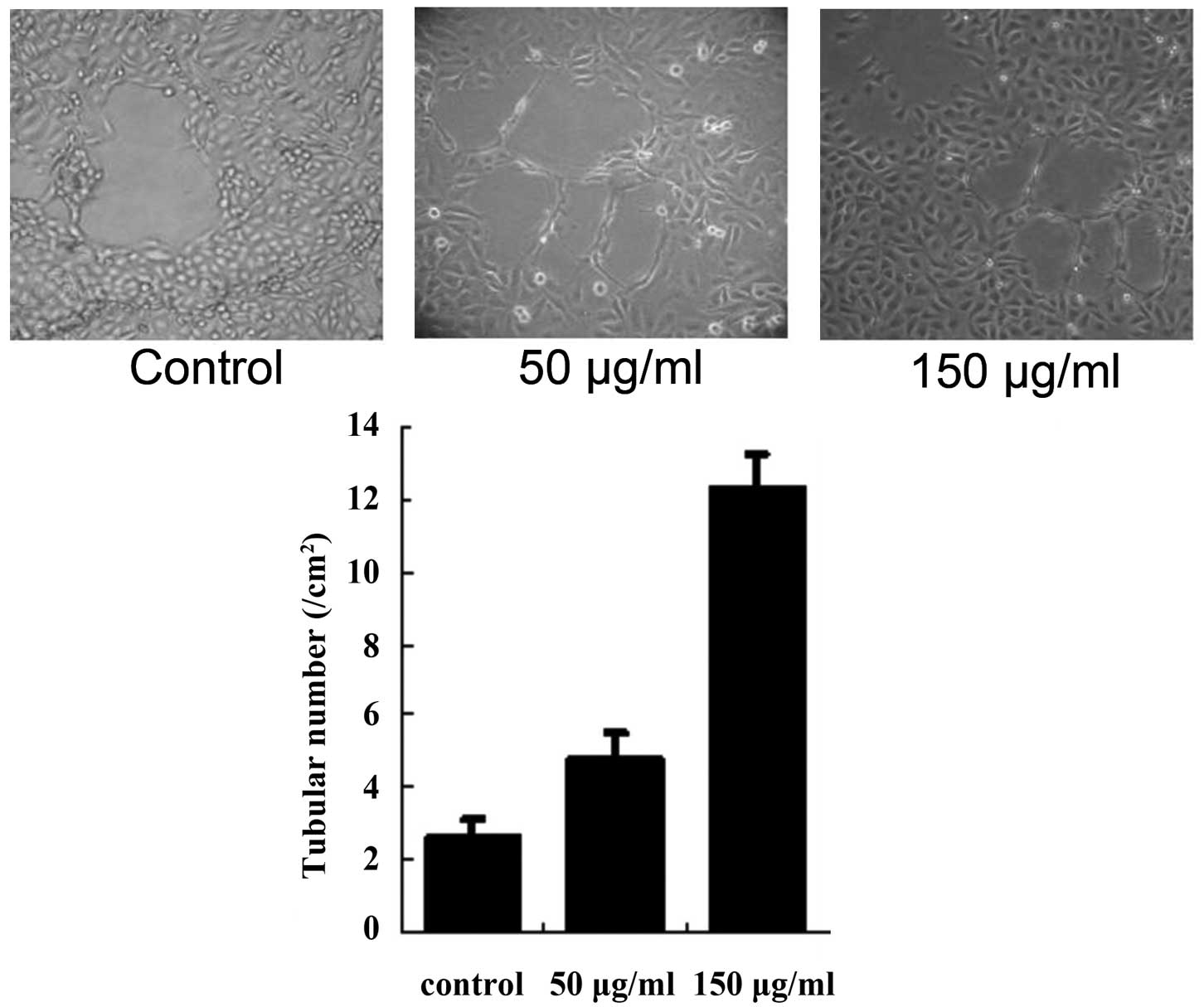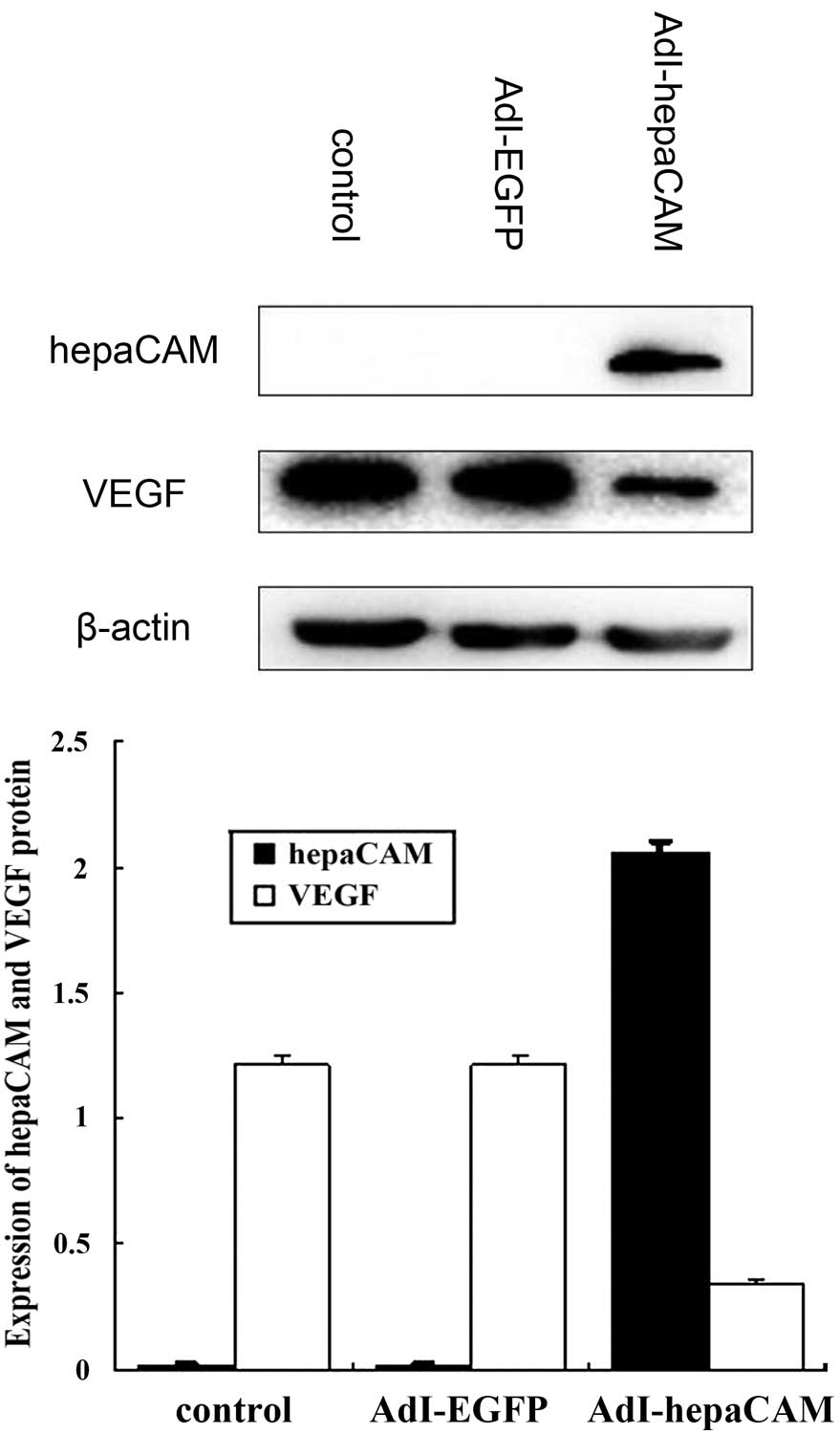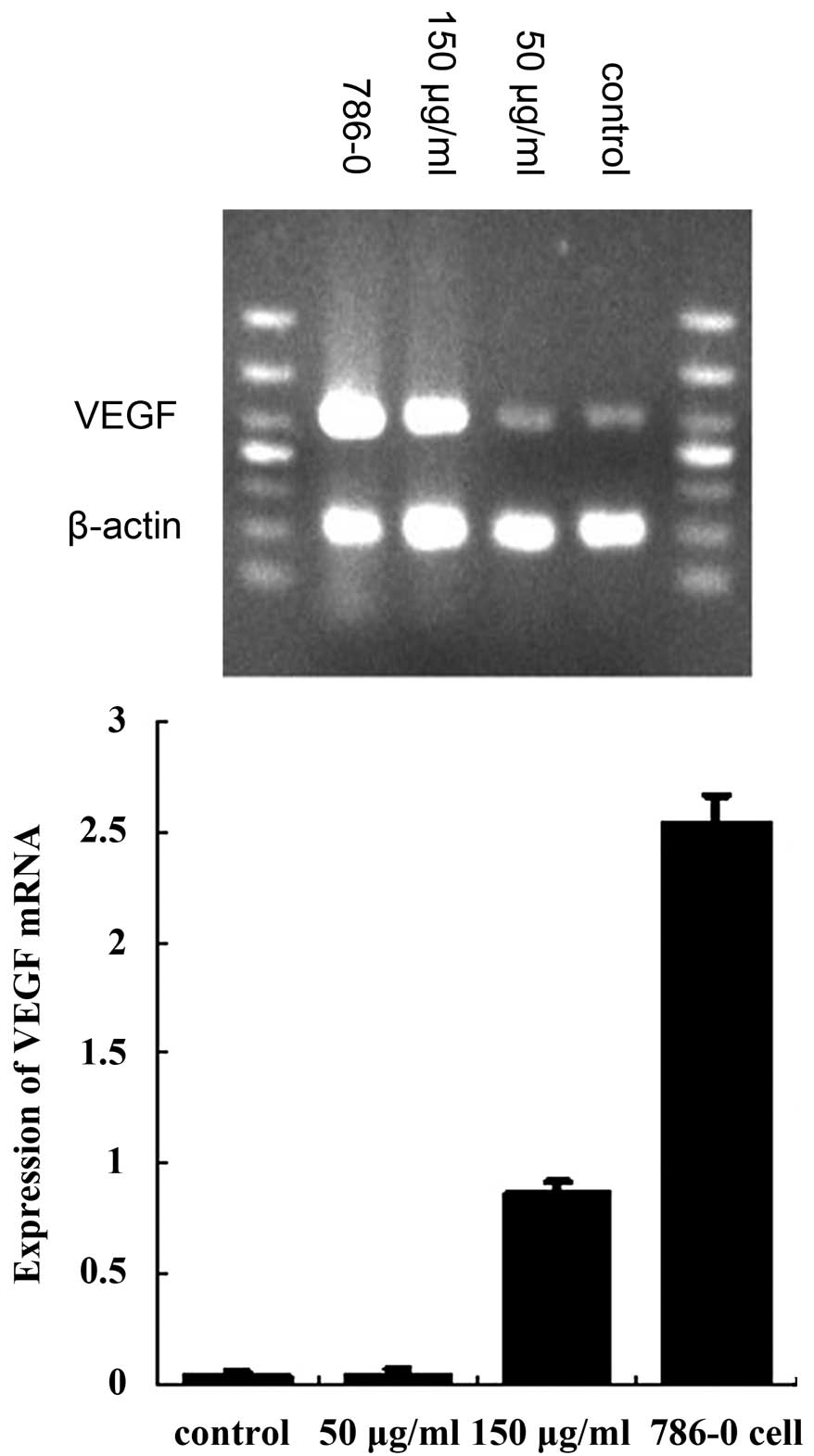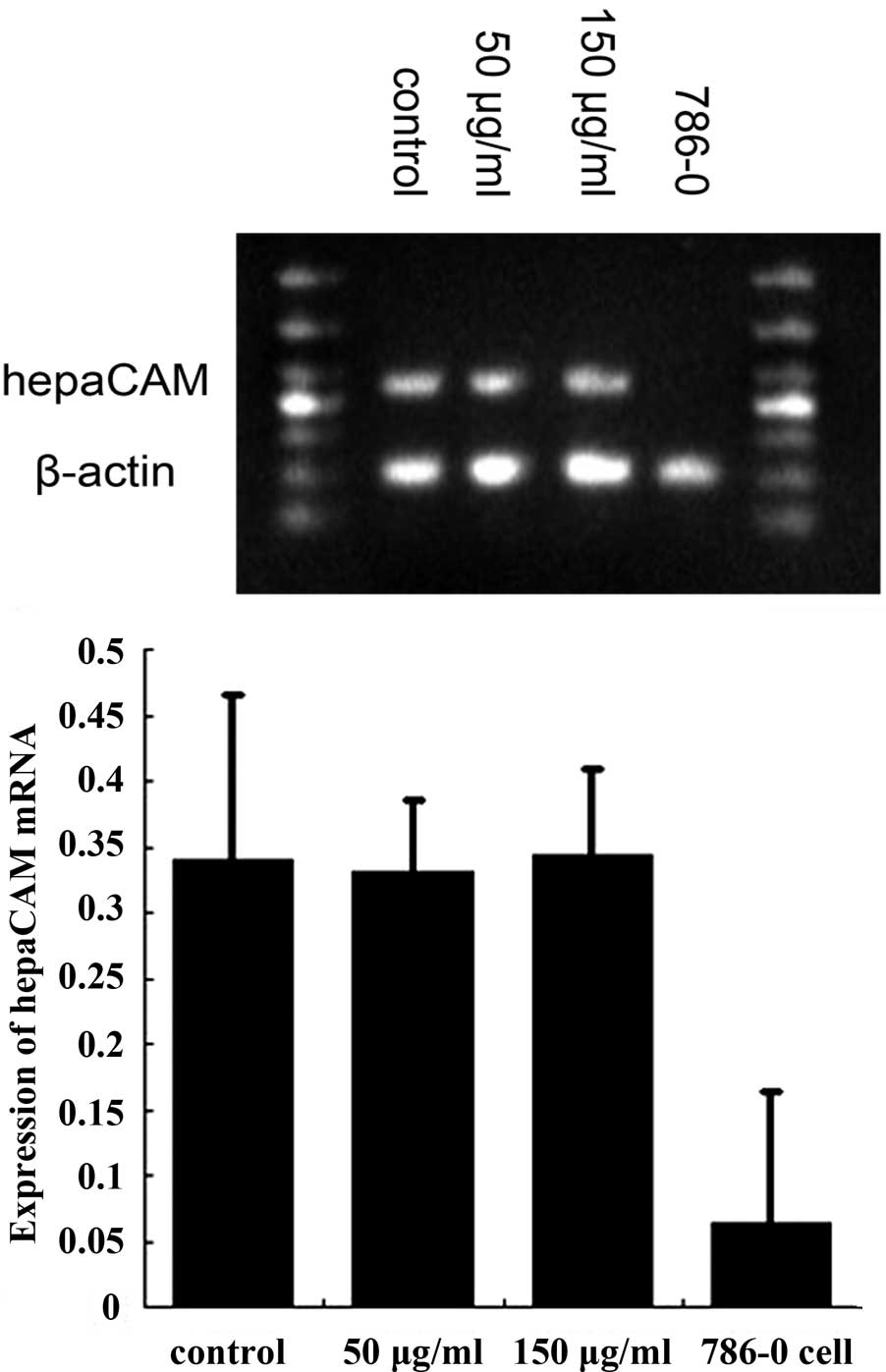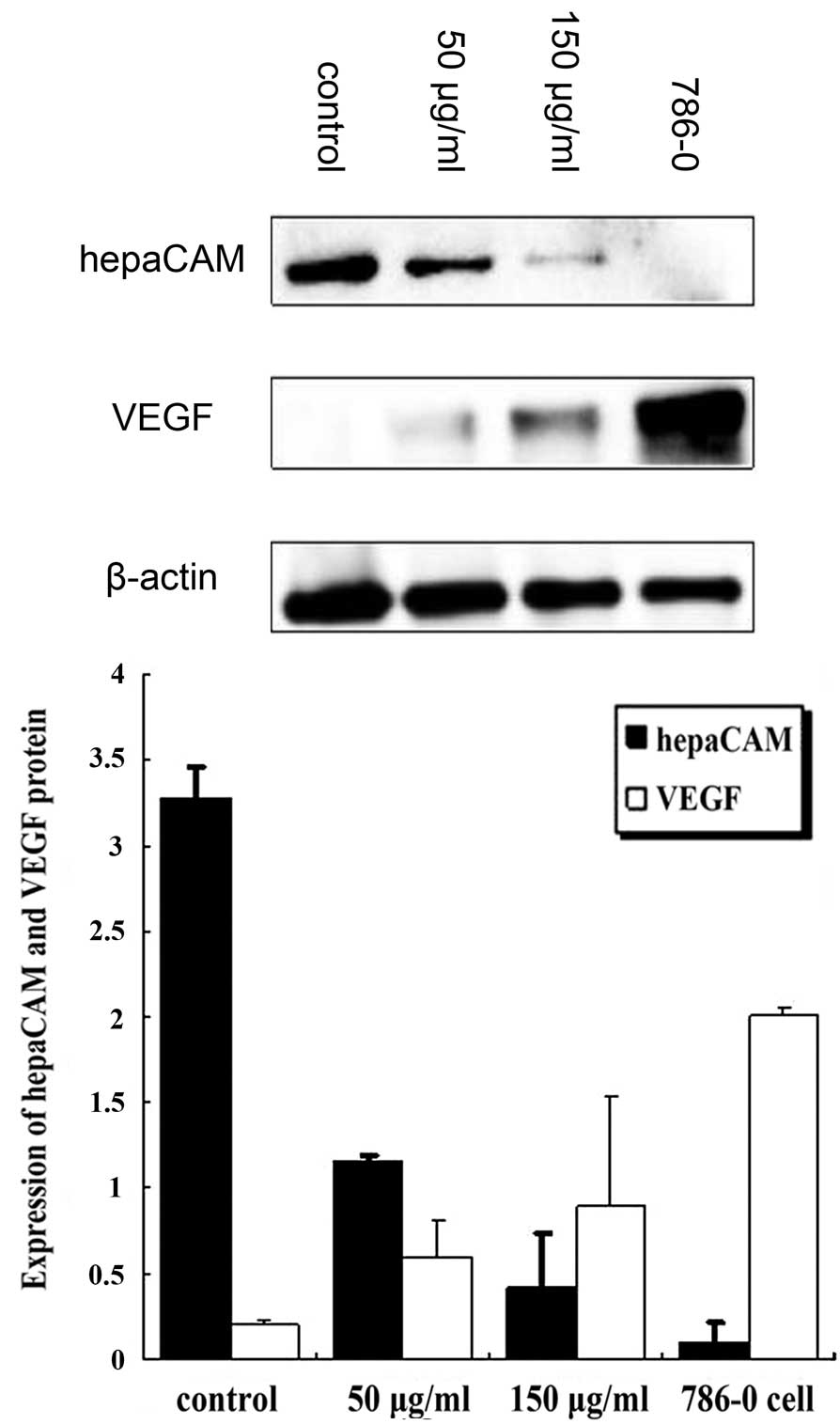|
1
|
Jemal A, Siegel R, Xu J and Ward E: Cancer
statistics, 2010. CA Cancer J Clin. 60:277–300. 2010. View Article : Google Scholar
|
|
2
|
Keller S, Sanderson MP, Stoeck A and
Altevogt P: Exosomes: from biogenesis and secretion to biological
function. Immunol Lett. 107:102–108. 2006. View Article : Google Scholar : PubMed/NCBI
|
|
3
|
Iero M, Valenti R, Huber V, et al:
Tumour-released exosomes and their implications in cancer immunity.
Cell Death Differ. 15:80–88. 2008. View Article : Google Scholar : PubMed/NCBI
|
|
4
|
Ratajczak J, Wysoczynski M, Hayek F,
Janowska-Wieczorek A and Ratajczak MZ: Membrane-derived
microvesicles: important and underappreciated mediators of
cell-to-cell communication. Leukemia. 20:1487–1495. 2006.
View Article : Google Scholar : PubMed/NCBI
|
|
5
|
Quesenberry PJ and Aliotta JM: The
paradoxical dynamism of marrow stem cells: considerations of stem
cells, niches and microvesicles. Stem Cell Rev. 4:137–147. 2008.
View Article : Google Scholar : PubMed/NCBI
|
|
6
|
Cocucci E, Racchetti G and Meldolesi J:
Shedding microvesicles: artefacts no more. Trends Cell Biol.
19:43–51. 2009. View Article : Google Scholar : PubMed/NCBI
|
|
7
|
Théry C: Exosomes: secreted vesicles and
intercellular communications. F1000 Biol Rep. 3:152011.PubMed/NCBI
|
|
8
|
Mathivanan S, Ji H and Simpson RJ:
Exosomes: extracellular organelles important in intercellular
communication. J Proteomics. 73:1907–1920. 2010. View Article : Google Scholar : PubMed/NCBI
|
|
9
|
Fevrier B and Raposo G: Exosomes:
endosomal-derived vesicles shipping extracellular messages. Curr
Opin Cell Biol. 16:415–421. 2004. View Article : Google Scholar : PubMed/NCBI
|
|
10
|
Marleau AM, Chen CS, Joyce JA and Tullis
RH: Exosome removal as a therapeutic adjuvant in cancer. J Transl
Med. 10:1342012. View Article : Google Scholar : PubMed/NCBI
|
|
11
|
Lin WW and Karin M: A cytokine-mediated
link between innate immunity, inflammation and cancer. J Clin
Invest. 117:1175–1183. 2007. View
Article : Google Scholar : PubMed/NCBI
|
|
12
|
Goth MI, Hubina E, Raptis S, Nagy GM and
Toth BE: Physiological and pathological angiogenesis in the
endocrine system. Microsc Res Tech. 60:98–106. 2003. View Article : Google Scholar : PubMed/NCBI
|
|
13
|
Pircher A, Medinger M and Drevs J: Liver
cancer: Targeted future options. World J Hepatol. 3:38–44. 2011.
View Article : Google Scholar : PubMed/NCBI
|
|
14
|
Carmeliet P and Jain RK: Angiogenesis in
cancer and other diseases. Nature. 407:249–257. 2000. View Article : Google Scholar : PubMed/NCBI
|
|
15
|
Yang R, Zhang H and Zhu L: Inhibitory
effect of resveratrol on the expression of the VEGF gene and
proliferation in renal cancer cells. Mol Med Rep. 4:981–983.
2011.PubMed/NCBI
|
|
16
|
He Y, Wu X, Luo C, Wang L and Lin J:
Functional significance of the hepaCAM gene in bladder cancer. BMC
Cancer. 10:832010. View Article : Google Scholar : PubMed/NCBI
|
|
17
|
Moh MC, Zhang T, Lee LH and Shen S:
Expression of hepaCAM is downregulated in cancers and induces
senescence-like growth arrest via a p53/p21-dependent pathway in
human breast cancer cells. Carcinogenesis. 29:2298–2305. 2008.
View Article : Google Scholar : PubMed/NCBI
|
|
18
|
Zhang T, Moh MC, Lee LH and Shen S: The
immunoglobulin-like cell adhesion molecule hepaCAM is cleaved in
the human breast carcinoma MCF7 cells. Int J Oncol. 37:155–165.
2010.PubMed/NCBI
|
|
19
|
Yang S, Wu X, Luo C, Pan C and Pu J:
Expression and clinical significance of hepaCAM and VEGF in
urothelial carcinoma. World J Urol. 28:473–478. 2010. View Article : Google Scholar : PubMed/NCBI
|
|
20
|
Belting M and Wittrup A: Nanotubes,
exosomes and nucleic acid-binding peptides provide novel mechanisms
of intercellular communication in eukaryotic cells: implications in
health and disease. J Cell Biol. 183:1187–1191. 2008. View Article : Google Scholar
|
|
21
|
Al-Nedawi K, Meehan B and Rak J:
Microvesicles: messengers and mediators of tumor progression. Cell
Cycle. 8:2014–2018. 2009. View Article : Google Scholar : PubMed/NCBI
|
|
22
|
Skog J, Würdinger T, van Rijn S, et al:
Glioblastoma microvesicles transport RNA and proteins that promote
tumour growth and provide diagnostic biomarkers. Nat Cell Biol.
10:1470–1476. 2008. View
Article : Google Scholar : PubMed/NCBI
|
|
23
|
Al-Nedawi K, Meehan B, Micallef J, et al:
Intercellular transfer of the oncogenic receptor EGFRvIII by
microvesicles derived from tumour cells. Nat Cell Biol. 10:619–624.
2008. View
Article : Google Scholar : PubMed/NCBI
|
|
24
|
Al-Nedawi K, Meehan B, Kerbel RS, Allison
AC and Rak J: Endothelial expression of autocrine VEGF upon the
uptake of tumor-derived microvesicles containing oncogenic EGFR.
Proc Natl Acad Sci USA. 106:3794–3799. 2009. View Article : Google Scholar : PubMed/NCBI
|
|
25
|
Corrado C, Flugy AM, Taverna S, et al:
Carboxyamidotriazole-orotate inhibits the growth of
imatinib-resistant chronic myeloid leukaemia cells and modulates
exosomes-stimulated angiogenesis. PLoS One. 7:e423102012.
View Article : Google Scholar
|
|
26
|
Grange C, Tapparo M, Collino F, et al:
Microvesicles released from human renal cancer stem cells stimulate
angiogenesis and formation of lung premetastatic niche. Cancer Res.
71:5346–5356. 2011. View Article : Google Scholar : PubMed/NCBI
|
|
27
|
Martinez MC and Andriantsitohaina R:
Microparticles in angiogenesis: therapeutic potential. Circ Res.
109:110–119. 2011. View Article : Google Scholar : PubMed/NCBI
|
|
28
|
Song H, Yin D and Liu Z: GDF-15 promotes
angiogenesis through modulating p53/HIF-1alpha signaling pathway in
hypoxic human umbilical vein endothelial cells. Mol Biol Rep.
39:4017–4022. 2012. View Article : Google Scholar : PubMed/NCBI
|
|
29
|
Ma J, Xue Y, Cui W, et al: Ras homolog
gene family, member A promotes p53 degradation and vascular
endothelial growth factor-dependent angiogenesis through an
interaction with murine double minute 2 under hypoxic conditions.
Cancer. 118:4105–4116. 2012. View Article : Google Scholar
|
|
30
|
Ling Y, Chen Y, Chen P, et al: Baicalein
potently suppresses angiogenesis induced by vascular endothelial
growth factor through the p53/Rb signaling pathway leading to G1/S
cell cycle arrest. Exp Biol Med (Maywood). 236:851–858. 2011.
View Article : Google Scholar
|
|
31
|
Reinmuth N, Thomas M, Meister M, Schnabel
PA and Kreuter M: Current data on predictive markers for
anti-angiogenic therapy in thoracic tumours. Eur Respir J.
36:915–924. 2010. View Article : Google Scholar : PubMed/NCBI
|



